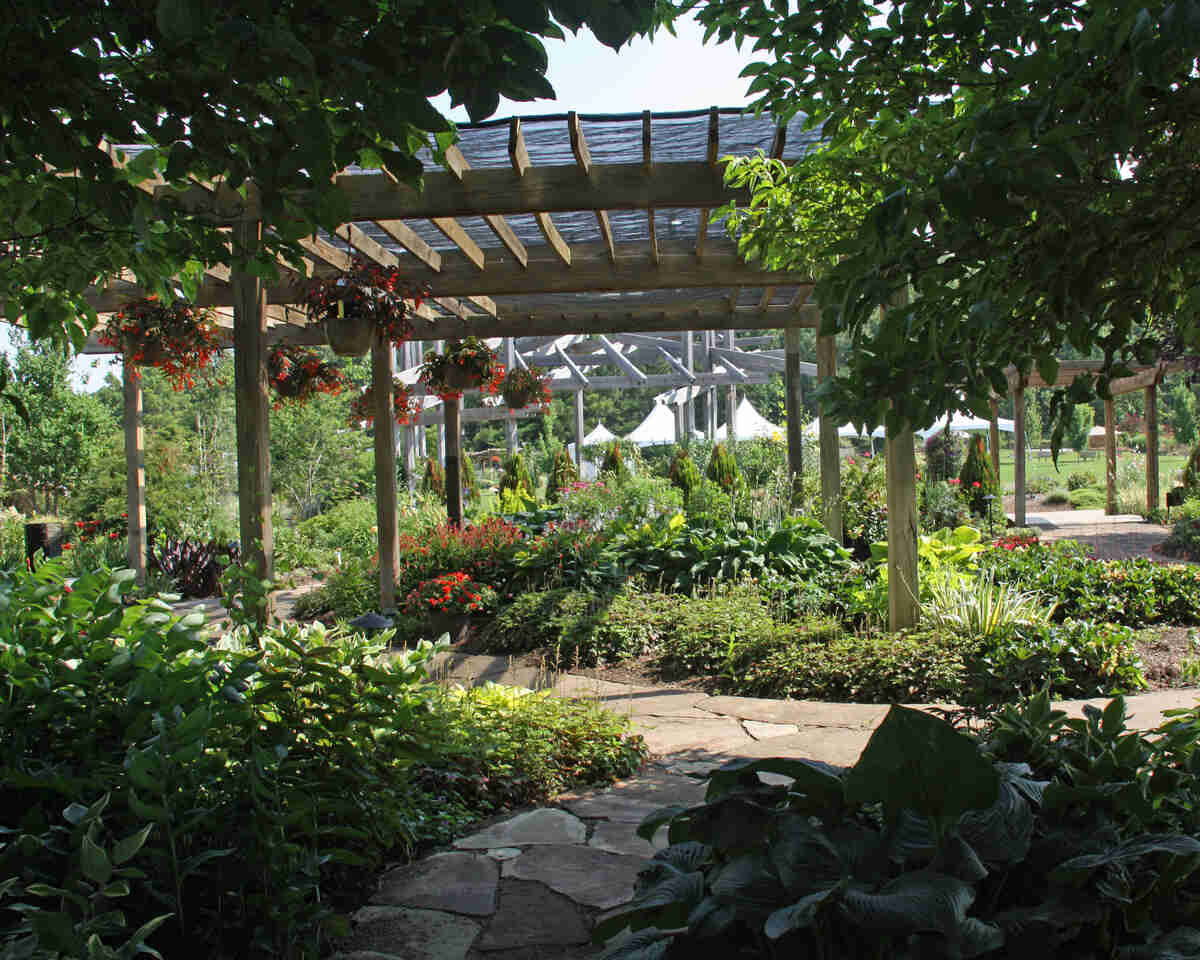
We’re not just throwing shade — grass can look dismal under a tree. Overcast areas created by trees, shrubs, and even your house can cut off the light a healthy lawn needs. But that doesn’t mean you have to cut down the trees or tear down the house. It is possible to grow grass in the shade.
“Too much shade can be problematic and lead to deterioration of turf quality and tolerance,” says Jacob Taylor, a master’s student involved in a Clemson University study on shade and iron fertilization of specific grasses. “We’re looking at what can be done to combat shade stress and retain acceptable turf quality.”
Get to Know Your Lawn
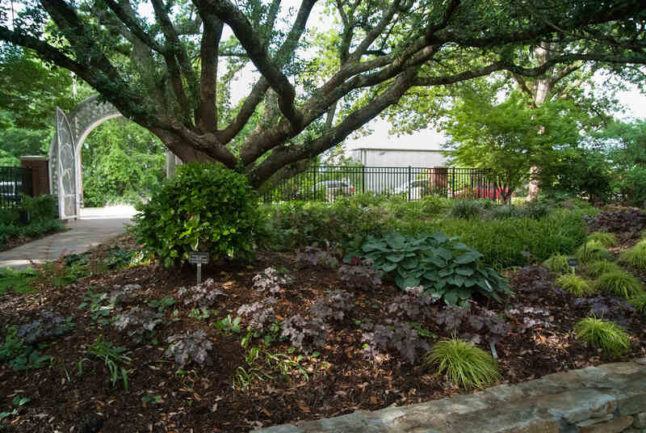
Before you launch a grass-improvement program, there are a few things you should know about your lawn.
Which Way Does it Face? A south-facing lawn gets more sun than a north-facing one. Eastern exposures get the morning sun; western exposures get more afternoon sun.
When Does it Get the Most Light? The sun’s rays are stronger at noon, and sunny or dappled areas can change as the day goes on. Grab your camera and choose a spot that faces the shady areas. Take pictures in the morning, noon, midafternoon, and early evening, so you can determine how many hours of full or partial sun that spot gets.
How Healthy is the Soil? If you haven’t had a soil test done recently, get one. The results can help you amend the soil to support a healthy lawn, especially in shady spots.
Are Weeds a Problem? Ground-covering weeds, such as English ivy, can take over shady spots and make it harder for grass to survive. Get rid of those weeds before seeding the area.
Understand the Climate
It’s not just shade that affects lawn health. Extreme temperature changes, lack of air or wind, and humidity can determine whether grasses thrive or merely survive. So, to help your lawn thrive, determine what environment your yard provides.
What Zone is Your Lawn in? Learn more about your climate from these two maps:
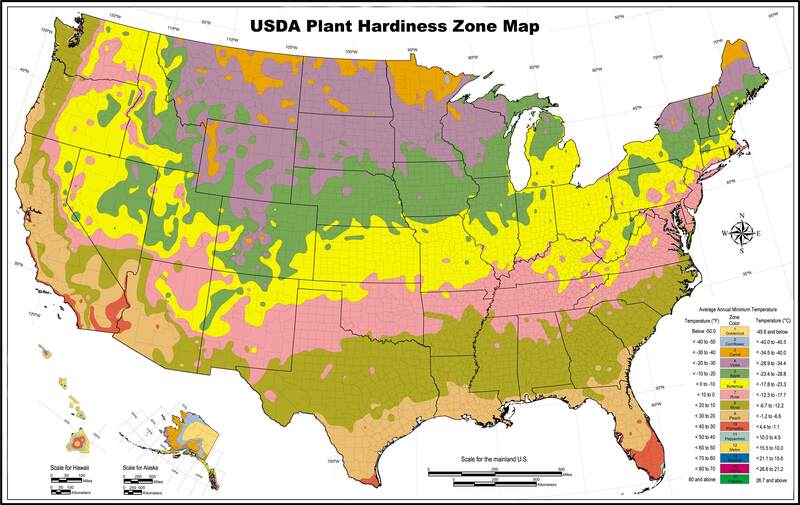
Knowing your zone will help you choose the right grass variety or combination of varieties.
Do temperatures favor cool-season or warm-season grasses? Cool-season grasses grow best in early spring and fall temperatures of 65-80 degrees Fahrenheit. Warm-season grasses do well in areas with summer temperatures of 75-90 degrees.
Choose the Right Grass Seed for a Shady Lawn

If you buy a bag of grass seed labeled “partial sun” or “shade tolerant,” is that the best choice for your lawn? There’s no guarantee. These terms mean only that the seller is asserting that this product does relatively better than a full-sun variety.
What Does ‘Shade Tolerant’ Mean?
“I don’t know of any regulations governing the word “shade tolerant” on grass seed labels,” says Peter Landschoot, Professor of Turfgrass Science at Penn State College of Agricultural Sciences. “However, all seed labels must disclose the contents of the container (percentage of seed [by weight] of each grass species and cultivar, and germination percentage).
“Typically, shade-tolerant seed mixtures in the northern U.S. have one or more of the fine fescues (creeping red fescue, Chewings fescue, and/or hard fescue) as the predominant component. A good quality turf-type tall fescue could also serve as a shade-tolerant species, but this type of grass is less tolerant of shaded conditions than the fine fescues,” he said.
What Does ‘Full Sun’ Mean?
“’Full sun’ usually means no shade whatsoever. Partial shade can mean just about anything, depending on who you talk to,” Landschoot says. “For me, it usually denotes a dappled effect, where the turf gets some sun (at least four to five hours of light throughout the day), and some shade as the day progresses.”
Since you expect the grass you plant under a tree to survive, it’s important to know which varieties can handle shady conditions in your yard.
For example, St. Augustinegrass and Zoysia are good warm-season grasses to grow in the shade.
| Grass Varieties' Tolerance for Shade | ||
|---|---|---|
| Tolerance | Cool-season grass varieties | Warm-season grass varieties |
| Excellent | Red fescue Velvet bentgrass | St. Augustinegrass Manilagrass |
| Good | Rough bluegrass Creeping bentgrass Tall fescue | Zoysiagrass |
| Medium | Colonial bluegrass Redtop Perennial ryegrass Meadow fescue | Centipedegrass Carpetgrass |
| Poor | Kentucky bluegrass | Buffalograss Bermudagrass |
| Source: James Beard, "Turfgrass, Science and Culture." This is a general guideline; many grass varieties have been developed with different shade tolerances. | ||
How to Grow Grass in the Shade
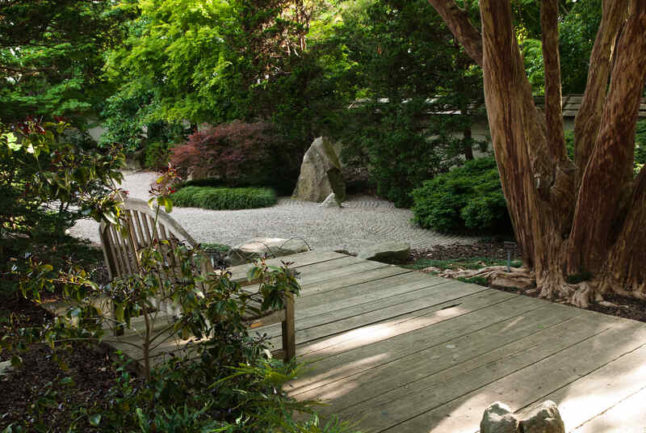
While picking the right seed is important, there are other steps you should take to grow grass in the shade:
Trim the Trees
Look at the tree canopy. Are the branches crowded together, or do dead limbs prevent sunlight from seeping through? On tall, mature trees, trimming all the low branches may bring in more sun.
Use a Hardy Grass
Trees have complex root systems that can compete with grass for water and nutrients — and the tree roots usually win. Consider a grass that doesn’t need much in the way of water or nutrients. Fine fescues not only do well in shade, but they also require less fertilizer and water than other, higher-maintenance grasses.
Control Dampness
Shade can cause moisture to remain in the soil and allow fungus or moss to grow. Level out any of those areas to balance rain and drainage. Water deep and infrequently, and apply fungicides if necessary.
Rake the Leaves
Remove fallen leaves and other debris as quickly as possible. This allows grass to receive more air and light.
Overseed
Seed in midspring and early fall for cool-season grasses or in early summer for warm-season turf. Water well after seeding.
Don’t Scalp the Grass
Mowing higher allows grass to process the sun it does receive. Raise the mower blade a half-inch to a full inch higher when cutting that portion of the yard.
Let the Grass Rest
Try to keep foot traffic (including kids and pets) to a minimum so that grass can recover and grow.
When Grass Just Won’t Grow
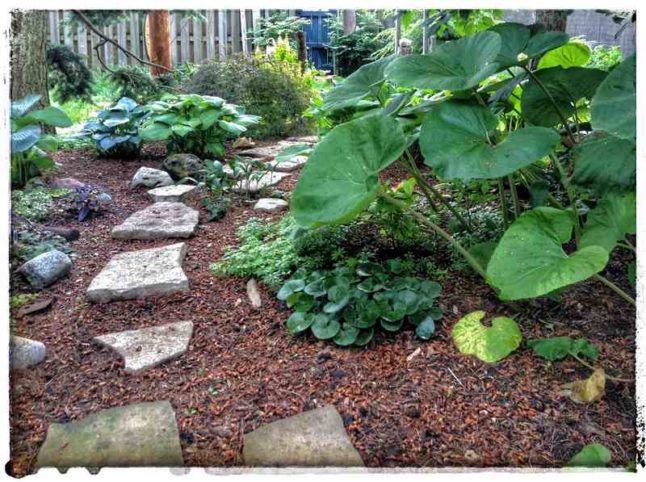
If despite your efforts, the grass isn’t showing signs of recovery, it’s time to consider other methods:
- Use mulch: If you have heavy shade, don’t even try to grow grass,” says Landschoot. “Grow ground cover plants or just mulch the area.” Don’t pile mulch against the tree’s trunk, but extend it out to the canopy line.
- Use ground cover: Opt for shade-tolerant ground cover. Stay away from invasive plants, but incorporate pollinator-loving plants that spread. Ground covers are great for sloped areas or spots with poor drainage.
- Try native plants or native grasses: Native plants have adapted to local conditions over hundreds of years, creating relationships and networks with other plants and animals.
A combination of native grasses and spreading plants could offer a lush green landscape with fewer cuttings. Blend this mixture into the larger expanse of lawn to give it a more uniform look.
- Build a shade garden: Most grasses don’t love shade, but there are some plants that thrive in it. Building a shade garden in a shady lawn area brings color, texture, and variations of height to an otherwise dull space. Install shade-loving plants, such as hostas, ferns, and coleus to make this portion of the yard bloom.
FAQ
“If you have four to five hours of direct sunlight per day, you should be able to grow a decent lawn, provided you have good drainage and shade-tolerant grasses in your lawn,” says Peter Landschoot of the Penn State College of Agricultural Sciences.
Contact your local Extension service or talk to turfgrass experts about the best shade-tolerant grass for your area and fertilizing schedules. Another option: Do you like the look of a shady park or public lawn? Ask the groundskeeper about their lawn care schedule and the types of grasses or plants used.
No. Trees, shrubs, and buildings don’t just block the sun, they block rain from reaching the grass roots, too. Give your shaded areas the same amount of water as the rest of the lawn each week. Early morning is the best time to water, especially for shaded areas, so that the turf has adequate time to dry and you don’t increase the potential for disease.
When to Call in a Pro
If the grass in your shady lawn is struggling, call in a lawn care pro to mow, weed, edge, and give sound advice on how best to care for your yard.
Healthy grass is a large part of your landscaping, but it’s not the only important element. As part of your lawn-improvement project, be sure your trees are in good condition, too. A local professional tree-care expert can check the health of your trees and do any pruning or removal of dead branches that they might require.
Main Image Credit: Tanya Impeartrice / Flickr / CC BY-ND 2.0